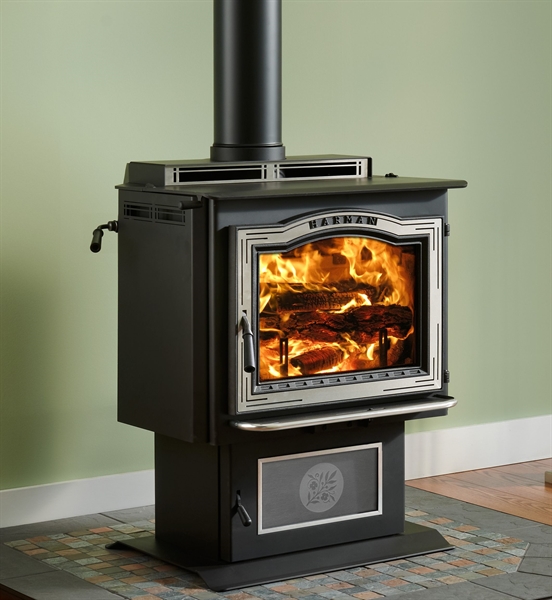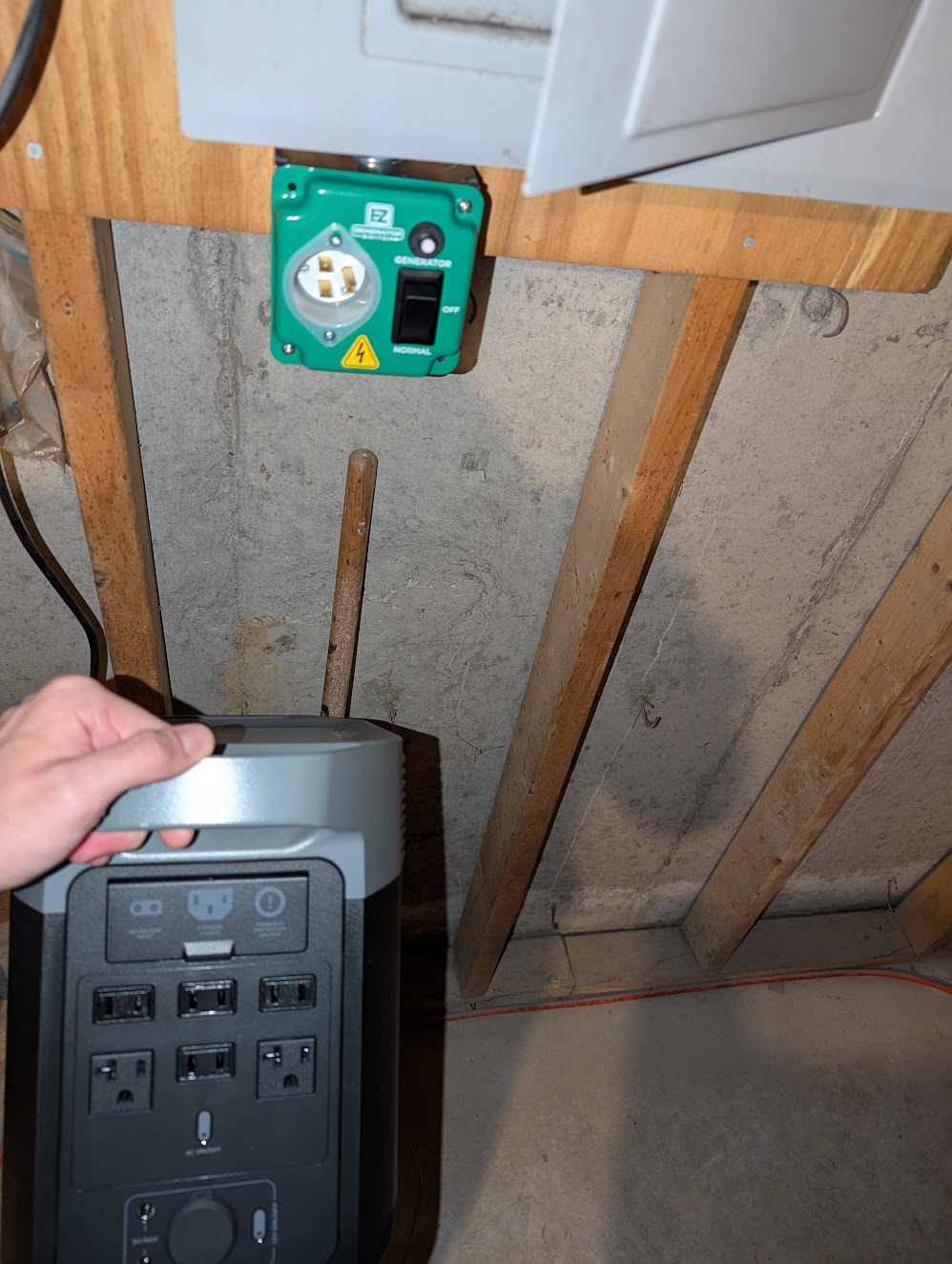Living in a rural area, I’m no strange to power outages. Just this winter we’ve lost power numerous times, one stint lasting over 72 hours. With being a new to home ownership, and having a career that is entirely remote, I’ve spent more time then I care to admit trying to find ways to make living through a power outage as comfortable as possible.
Heat
Wood Stove
Living in a house that leverages heating oil, and forced hot water, the first problem to solve is:
How does one heat their home during a power outage
Fortunately, the very item in the home that I was least excited about has become one of my favorites. Meet the the wood stove:

By having plenty of seasoned hard wood on hand, this beautiful wood stove is able to heat the entire home without power. While a more modern pellet stove may certainly be more convenient, and easier to operate, they traditionally require a power source to run the smart hopper, and additionally require manufactured pellets opposed to split wood. This makes the wood stove a lovely solution to our problem.
Running Furnace Off A Battery
My furnace creates heat by burning oil, heating water, and circulating that hot water throughout the house. Since the BTUs are coming from said oil, the amount of electrical required to run the furnace is coming from the furnace’s electronics, as well as the circulation systems of the hot water. This means that we can power this system off a battery.
My furnace is wired directly to the breaker box, and not say a three prong outlet. This is, I believe, required by many local codes. To achieve the ability to run off a battery, you effectively are added a switch into your system. Allowing your furnace to be powered off the grid when its up, or switching to an alternative source, a battery in our case.
I decided to use the EZ Generator Switch. After reading through the reviews and individuals write ups on many cheaper alternative, I decided to go with this particular product. I’m aware that a ~$100 price tag for a switch is incredibly expensive, but I want to trust it would work, and not break during a time of need.
Here’s a photo of the installed switch, and the battery I’m using:

For my battery, I have both a Ecoflow Delta 2 (shown in the photo above), and a smaller Ecoflow River 2 Pro.
A small tip, as with many electronics, my furnace requires a large amount wattage for a very brief time during powering on. Ecoflow’s have this X-boost mode, which slightly drops the voltage, to provide more wattage. This mode was required to get my furnace to be able to start.
Internet / Cell Service
Unfortunately the area I live in does not have cellular service, so I rely on Wi-Fi to make texts, and place phone calls. That means when the internet goes out, I have no forms of communication, nor can I simply access the internet through say a cellular LTE connection. Therefore, I have another problem to solve:
How can I continue to have internet, and cell service during a power outage
At first, I thought that purchasing an uninteruptable power supply like this one I already have for my machine, or this one I’ve been considering getting for my home lab. It turns out these systems don’t have a very large capacity, and you’re paying for the very quick ability to switch from power from an outlet, to power from a battery. So fast that a desktop PC would not power off. This feature is not necessary for my use case, as a power cycle is acceptable, and therefore is not something I’d like to sacrifice battery capacity for.
I ended up stumbling upon this Reddit post which stated:
A normal UPS converts DC -> AC and then your devices will convert AC -> DC. This conversion is extremely inefficient with small loads. Most UPS units don’t even advertise their efficiency below 50W.
You’re on the right track with a DC Mini UPS. There are a handful of units on Amazon and all of them seem to be really bad.
The only reliable option I have found so far is from a company called Precision Group aka Precision Power
The author specifically draws attention to the product PP75L-12P, which is a micro UPS battery pack, capable of outputting 12v, 6.25 A. The system is extendable to four battery packs, each with a capacity of 77 watt hours, with a total max capacity of 308 watt hours.
This other Reddit post mentioned:
A lot of cable modems, DSL modems and WiFi routers run on DC. If you’re lucky they are all 12v.
It’s more efficient to run everything off DC directly. Instead of converting AC to DC back to AC and then back to DC. That way you can run your WiFi for hours instead of the 15 minutes your average UPS provides.
This further reinforced the idea of using a mini power supply that provided DC power. Here is the minified network stack that I’m interested in running.
- Modem ARRIS SURFboard SB8200 input +12V, 1.5A DC
- Router TP-Link ER605 input +12V, 1.0A DC
- Wireless Access Point TP-Link EAP610 input +12V, 1.5A DC
With this knowledge in mind, we’re able to do some napkin math to see how long we can run the minimum network stack I can run. To calculate how long you can run the devices on the battery, we first need to determine the power consumption of each device in watt-hours. We’ll calculate this by using this equation:
Power = Voltage x Current
Modem
12V × 1.5A = 18 watts
Router
12V × 1.0A = 12 watts
Wireless Access Point
12V × 1.5A = 18 watts
Now, let’s add up the power consumption of all three devices:
Total Power Consumption = 18 watts (Modem) + 12 watts (Router) + 18 watts (Access Point) = 48 watts
Now, to find out how long the battery can power these devices, we divide the total watt-hours of the battery by the total power consumption of the devices:
Time = Battery Capacity / Total Power Consumption
Time = 308 watt-hours / 48 watts ≈ 6.42 hours
I can expand this run time even further by purchasing more batteries.
Power
By Generator
The Champion Power Equipment 100520 8750-Watt generator can be hooked up to one’s house via a 30 Amp power inlet box. This allows the majority of one’s homes electrical devices to be ran.
I am able to run my well pump, furnace, lights, television, necessary internet stack, fridge, and chest freezer all off it. Running it on “ecomode” allows one to squeeze out even more runtime on it. I suggest using a tool like Camel Camel Camel or Slick Deals to wait for when this device goes on sale.
Running the generator also allows me to charge up my batteries, for when the generator is not in use.
By Batteries
Power Station
Just like I leveraged batteries to run my important minified network stack during a power outage, I also wanted the ability to run a few key devices as well. Things like the fridge, chest freezer, lights and even television. I stumbled upon the term “power station”, which basically means “a big portable battery”, which made me learn about the company Ecoflow.
I ended up picking up a Delta 2, and a smaller Ecoflow River 2 Pro. Once again, I recommend using a tool like Camel Camel Camel or Slick Deals to wait for when this device goes on sale.
Both the Delta 2, and the River 2 Pro can run many devices at the same time, and can interfaced with over Bluetooth, which is handy during a power outage or camping situation.
Overall, these battery provides comforts during a power outage, and can be quickly charged up once the generator is up and running.
Power Banks
Anker is generally considered the king of power banks and chargers. Their latest 24,000 mAh 140W output charger is a lovely product that can keep your phone, or laptop charged for quite a while. I don’t have much to say about this device, other than the digital display on it is quite a step up in convenience compared to the previous models.
Water
Having access to such a large generator, allows me to run a well pump and gain access to water. Having a small water container on hand, allows me to continue to enjoy the essence of all life, and flush the toilets.0
Lighting
I’ve found that the company Sofirn to make great flash lights, and lanterns. The C8L is a fantastic large flashlight, while the HS10 is a convenient headlamp.
In addition to flash lights, having a few lanterns on hand makes it easier to illuminate a larger area. I’m quite fond of the LT1S, and its larger cousin the BLF LT1.
Future Desires
Overall, I feel like I have the basics covered, but I do long for having solar panels and a whole home battery backup system installed.
